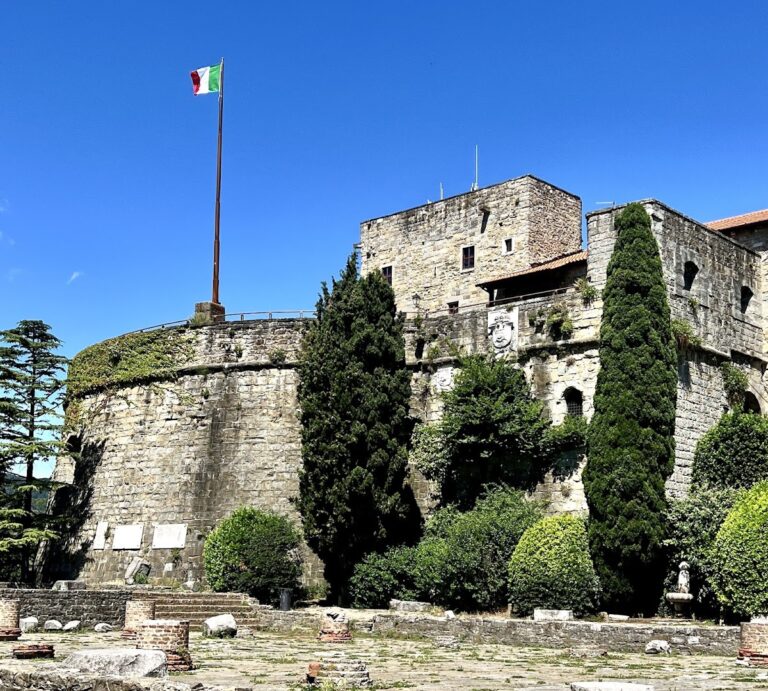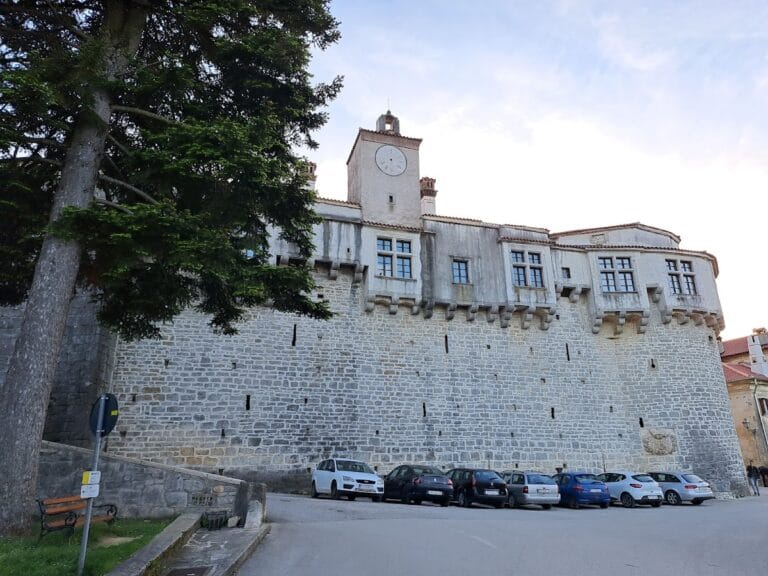Momjan Castle: A Medieval Fortress in Northern Istria, Croatia
Visitor Information
Google Rating: 4.5
Popularity: Low
Google Maps: View on Google Maps
Official Website: www.istra.hr
Country: Croatia
Civilization: Unclassified
Remains: Military
History
Momjan Castle is located in the municipality of Momjan in modern-day Croatia. This medieval fortress was established by the mid-11th century and built by the Croatian feudal lords who controlled northern Istria during that period.
The earliest mention of the area appears in a 1035 imperial diploma issued by Emperor Henry IV that defined the boundaries of the Istrian March, referring to the settlement as Mimiliano. Subsequent medieval documents from 1064 and 1102 connect Momjan to the Istrian margraves and the Patriarchate of Aquileia, indicating its early importance in regional power structures. By the early 13th century, the fortress was likely constructed by Vošalk Devinski, a nobleman who held the estate around 1230. This marked the foundation of the Momjan lordship, which expanded its influence substantially over the following century.
During the 13th century, the descendants of the Devinski family, who became known as the Momjan lords, extended their authority over 48 villages across Istria, the Karst region, and Friuli. Their power was especially notable under the brothers Biakino and Kono Momjanski, who gained mayoral roles in several coastal towns. The period was marked by violent feudal rivalries culminating in 1267, when Biakino was murdered by opponents from the neighboring Pietrapelosa lordship. This assassination led to a series of military reprisals and ongoing strife between noble families.
In the early 14th century, the castle changed hands amid the shifting allegiances among the Patriarchate of Aquileia, the Counts of Gorizia, and the Venetian Republic. Aligning themselves with Venice in 1309, the owners of Momjan faced seizure of their estate just two years later. The fortress and lands were subsequently granted as a fief by the Venetian authorities to various noble houses, including the Prampero family and later to the Counts of Gorizia. In 1344, the castle became a point of contention during a war with Venice, during which a treaty required its destruction; however, records do not clarify whether this order was fully implemented.
Following the death of Albert IV, Count of Gorizia, in 1374, the territory passed under Habsburg control. Both the Chiara and Paradaiser families held the castle as imperial vassals during this era. From 1338 until 1508, the barons Ravnak maintained lordship of Momjan, until Venetian forces occupied the region. The fortress was incorporated into the town of Piran in 1510, at which time the town stationed a small garrison of four soldiers to maintain order.
Later ownership passed to the Counts Rota, who undertook significant renovations during the 16th century, including restoring the castle church. The Rota family retained possession until the 19th century but abandoned the medieval fortress in 1835, moving to a newly built manor in the village of Momjan. During the tenure of Simon II Rota, from 1569 to 1631, a detailed inventory of the estate known as the Momjan cadastre was compiled and updated, documenting the extensive property holdings.
Remains
Momjan Castle stands on a rocky promontory 232 meters above sea level, commanding views over the Dragonja river valley. The fortress, primarily constructed during the medieval period, was designed as a residential stronghold with defensive features adapted to the natural terrain. Its walls and structures were built to utilize the elevated position, reflecting common construction techniques of feudal fortresses in Istria.
One notable feature of the site is the castle church dedicated to Saint Stephen, first referenced in a will dated 1327. This religious building served the local feudal lords and likely functioned as a private chapel within the castle grounds. The church underwent restoration in the 16th century under Count Simon I Rota, who also improved various parts of the castle complex.
In the 16th century, the Counts Rota undertook extensive renovations to the fortress, reinforcing and modifying the existing structures. Although specifics on architectural details are limited, these improvements ensured the castle remained a suitable noble residence until its abandonment nearly three centuries later. After 1835, the family relocated to a manor house constructed in the lower village of Momjan during the 18th century by Horace IV Rota, leaving the castle largely unoccupied.
Following its incorporation into the town of Piran in 1510, the castle hosted a small military garrison consisting of four soldiers, reflecting its role in regional defense and administration. Today, the castle stands in a ruinous or abandoned state, with remaining walls marking its former footprint. The site retains significant historic value as the medieval center of the Momjan lordship and reflects important phases of feudal, religious, and military presence in northern Istria.










